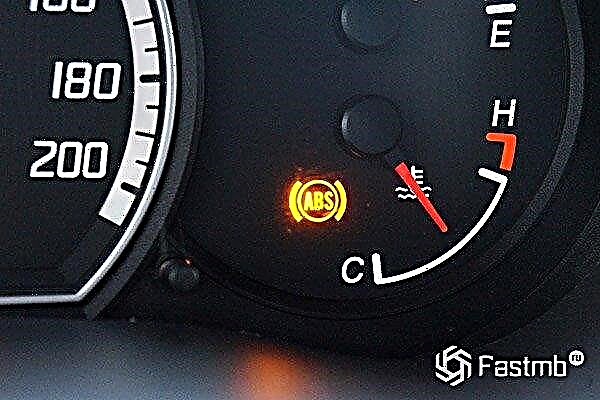

The content of the article:
- Exterior of the BMW X3 and Mercedes-Benz GLC
- Interior decoration
- Technical characteristics of BMW X3 and Mercedes-Benz GLC
- Driving qualities, cost and equipment of models
If you have the money and are faced with the task of buying the best mid-size premium crossover, then your search will certainly lead to a choice between the BMW X3 and the Mercedes-Benz GLC, since these models are tacitly considered the best in their class.
And it's hard to disagree with this, since both cars are great and can satisfy the needs of even the most sophisticated buyer. However, we decided to identify one winner, and what came of it, read on.
Exterior of the BMW X3 and Mercedes-Benz GLC

Examining the exterior of the new BMW X3, the predatory head optics, the branded "nostrils" of the false radiator grille, as well as the dynamic profile and fried stern with spectacular side lights and two exhaust pipes are striking.
All this testifies to the fact that before us is a 100% athlete, capable of jumping off the ground at any time and going to conquer winding tracks and high-speed autobahns.

In comparison, the Mercedes-Benz GLC looks more restrained, although it is also not devoid of a touch of sportiness. The front part of the Mercedes body demonstrates stylish optics of the head light, a large false radiator grille with a large three-beam star in the center, as well as a moderately sporty profile.
The dimensions of the models are as follows:
| Specifications | Bmw x3 | Mercedes-Benz GLC |
| Length, mm | 4716 | 4656 |
| Width, mm | 1897 | 1890 |
| Height, mm | 1676 | 1639 |
| Wheelbase, mm | 2820 | 2873 |
As you can see, BMW is slightly larger than its opponent and offers a more impressive ground clearance as standard - 204 mm versus 181 mm. However, an optional air suspension is available to Mercedes, which allows you to vary the ground clearance within 147-227 mm, which allows you to confidently move both on the high-speed highway and on serious off-road.
Summing up the exterior, we note that we are more impressed by the exterior of the GLC, since it is more versatile, while the X3 is more suitable for lovers of aggressive and sporty style.
Interior design of the BMW X3 and Mercedes-Benz GLC

As befits a premium car, the quality of the materials and build quality of both crossovers is at a very, very high level.
However, the design of Mercedes-Benz looks much richer, which is facilitated by a more presentable and stylish front dashboard. That only is the exquisite bend of the central dashboard, spectacular air vents and the touchscreen display of the multimedia information center towering above them!

The front dash of BMW is well known from the previous models of the company. It is still slightly turned towards the driver and is devoid of any frills - everything is as simple and ergonomic as possible. However, this has long been one of the main features of all cars of the Bavarian brand.
The first row seats provide the most comfortable fit, and this applies to people of absolutely any height and build. The seats themselves are replete with adjustments and have excellent lateral support, so that the driver is in place even during high-speed cornering.
The front seats of Mercedes-Benz are also stuffed with all kinds of adjustments, but they have less tenacious lateral support, that is, they have an order of magnitude more comfort than sportiness.
In the second row of seats, both in the first and in the second case, three adult riders will be able to sit without any problems, however, in the Mercedes there is a little more free space, both in length and above the heads of the rear riders.
Special attention should be paid to the fact that BMW rear passengers have the ability to tilt the rear backrest, which is especially important on long journeys.
Speaking of such a parameter as the volume of the trunk, the cars have full parity - 550 liters in a five-seater layout and 1600 liters with the rear row backs down. However, in BMW, in contrast to the opponent, when the second row of seats is fully folded, a perfectly flat loading area is formed, while Mercedes cannot boast of such an "option".
In total, if quality and comfort are more important to you, then the Mercedes-Benz interior will be more preferable, while BMW offers better ergonomics, intuitive control of the iDrive multimedia complex and a more practical luggage compartment.
Technical characteristics of BMW X3 and Mercedes-Benz GLC

The range of power plants available for the Mercedes GLC-class in Russia is represented by 8 engines:
- 2.1-liter diesels rated 220 d and 250 d, generating 170 and 204 hp respectively. In the first case, the buyer can count on 400 Nm of torque, and in the second - on 500 Nm.
With the "senior" engine, the car exchanges a hundred in 7.6 seconds, while the "junior" one for 0.7 seconds. slower. The maximum speed is 223 and 210 km / h, respectively, for a 204-horsepower and 170-horsepower engine, but the average fuel consumption is identical - about 5.5 l / 100 km.
- 2-liter gasoline engines with an index of 250 and 300, which produce 211 and 245 hp. With them, the car is able to accelerate from 0 to 100 in 7.3 seconds, and also reach a maximum speed of 223 km / h. The average fuel consumption does not exceed 7.1 l / 100 km.
- The most interesting option is a 2-liter 211-horsepower hybrid engine with a 350e index. Such a unit allows you to change the first hundred in 5.9 seconds, develop a maximum 235 km / h, and also consume an average of 2.7 l / 100 km.
Special AMG versions of the Mercedes GLC deserve special attention:
- GLC 43 4MATIC - equipped with a 3-liter gasoline power unit with a capacity of 367 hp, which allows you to change a hundred in 4.6 seconds. and accelerate to a peak 250 km / h, consuming an average of about 9.8 l / 100 km.
- GLC 63 4MATIC is equipped with a 4-liter petrol unit producing 476 hp. and consuming about 11.7 l / 100 km. With it, acceleration to "hundreds" takes 4 seconds, and the maximum speed is electronically limited to 250 km / h.
- GLC 63 S 4MATIC + - is driven by forced up to 510 hp. 4-liter petrol engine, allowing you to shoot from 0 to 100 km / h in 3.8 seconds. Such a motor consumes an average of about 12 l / 100 km and can accelerate to a maximum of 250 km / h (speed is limited by an electronic collar).
Compared to the Mercedes GLC, the BMW X3 has a more modest arsenal of power plants, represented by two gasoline and two diesel engines:
- 2-liter xDrive 20d diesel generating 190 hp and 400 Nm of rotational thrust. With it, the car consumes no more than 5.1 liters in a combined cycle, and can also reach a maximum speed of 213 km / h (acceleration from 0 to 100 in 8 seconds).
- 3-liter xDrive 30d diesel producing 249 hp and 620 Nm of thrust. This is enough to change a "hundred" in 5.8 seconds. and accelerate to 240 km / h. The average "appetite" is declared at around 6 l / 100 km.
- 3-liter gasoline engine with 249 hp. and 350 Nm of torque. With it, the first hundred is conquered in 6.3 seconds, the maximum speed is 240 km / h, and the average fuel consumption is 7.6 l / 100 km.
- The top 3-liter gasoline unit with the M40i index, producing 360 hp. and 500 Nm of thrust. Such an engine accelerates the crossover to 100 km / h in 4.8 seconds. and allows you to reach a maximum speed of 250 km / h. Despite the impressive power and excellent dynamics, the fuel consumption does not exceed 9 liters in the combined cycle.
Both cars are aggregated exclusively with automatic transmissions, while Mercedes boasts an optional 9-speed automatic transmission, while BMW has to be content with only 8 gears.
Driving performance, cost and equipment BMW X3 vs Mercedes-Benz GLC

As expected, the BMW has a sportier suspension and steering, which makes the car more willing to dive into corners, keep its trajectory confidently and hardly heel.
Mercedes also holds the trajectory confidently and has excellent handling overall, but in terms of "drive" it gives a little less fun.
The minimum cost of the Mercedes GLC in Russia starts at $ 3.53 million.rubles, while the "base" BMW X3 will cost at least 3.18 million rubles, that is, the difference is more than impressive.
Cars have, plus or minus, a comparable set of standard and optional equipment, which makes it possible to satisfy the needs of any buyer and to almost double the cost of a car “in full stuffing”.
Conclusion
Despite the fact that the Mercedes GLC and BMW X3 are in the same class, each of them has its own character and is designed for completely different categories of buyers.
So, the first is more suitable for people who love maximum luxury and comfort, while the second will be the best choice for those who want to get more "drive" from the car.











